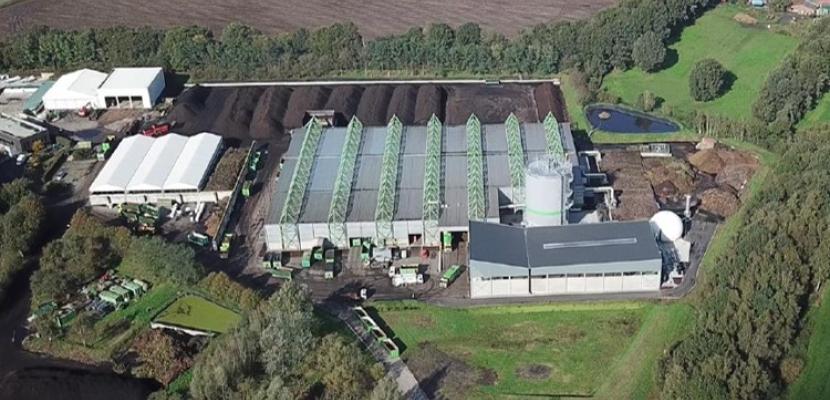
Implementing professional vegetable-fruit-garden (vfg)-waste pre-digestion and composting

About this good practice
In Flanders a distinction is made on the basis of feedstocks between so called green composting and vfg-composting. Composting (and anaerobic digestion) sites in Flanders are licensed and controlled with reference to Best Available Techniques (BAT). The BAT on composting & digesting serves as benchmark. This type of professional green- of vfg-composting occurs on large (10.000s tons input/y) as well as smaller scale (< 5000 ton input/y).
A larger scale vfg-composter is that of IOK where ±60.000 tons of vfg-waste (including kitchen-waste) and green waste (from parks, public domain) are treated yearly: the selectively retrieved vfg-waste is shredded, stripped of impurities, heated and fed into a dry thermophilic anaerobic digester that yields digestate and biogas which is partly used as fuel for 2 CHP’s (combined heat and power-motors Jenbacher and MAN) in situ. Biogas is upgraded (membrane technology) for gas grid injection. IOK plans to capture the CO2 (of biogas upgrading) and use it as nutrient in greenhouses.
The digestate is then mixed with green waste, and composted in a closed hall. This process lasts min. ±4 weeks with min. 3 turns, after which compost is sieved (16mm) from the overflow fraction (recirculating to shredder/start of composting process). To ensure hygienisation minimum temp/time-conditions are upheld and controlled. The sieved matter matures, including turning of the piles, outside for about 8 to 10 weeks until a high quality compost is obtained.
Resources needed
Total CAPEX ±13.000.000 euro (incl. VAT). Based on OVAM-studies (2000, 2002, 2013) and VITO’s BAT (2005) an intermunicipal OPEX cost varies from 60-80€/ton waste for vfg-composting to 140–160€/ton waste for vfg-digestion+post-composting. A vfg-waste composting plant typically employs 8-10 people.
Evidence of success
Yearly 25K tons vfg-compost is made from 35K tons vfg-waste (€57/ton gate fee), 20K tons green waste (€35/ton gate fee) and ±7K tons of road clippings (±€45/ton gate fee). Total technical cost complex to state. Based on #studies an intermunicipal cost of ±€150/ton is estimated. Net intermunicipal cost was ±€60/ton compost – refunded by taxes .... With rising appreciation (=higher compost price), and compost and biomethane need net intermunicipal cost of this practice is declining.
Potential for learning or transfer
Between collecting waste and turning it into compost, a number of intermediate steps are still possible within which by-products can be developed that can benefit the municipality or region. Self-produced gas reduces the need for imported fossil gas, self-produced electricity is additional green power and capturing CO2 to better grow crops in an enclosed greenhouse environment is a climate mitigation measure.
Municipal biowaste is turned into vfg-compost (certified, stable, hygienic and humus-rich soil improving product with slow-release nutrient content, which is sold at a low price (€5 to €15/ton) to locals, to local farmers or to substrate producers). This practice also recovers green energy from digestion by using the biogas in a CHP-installation generating green electricity and heat, and as biomethane for injection in the public gas grid.
